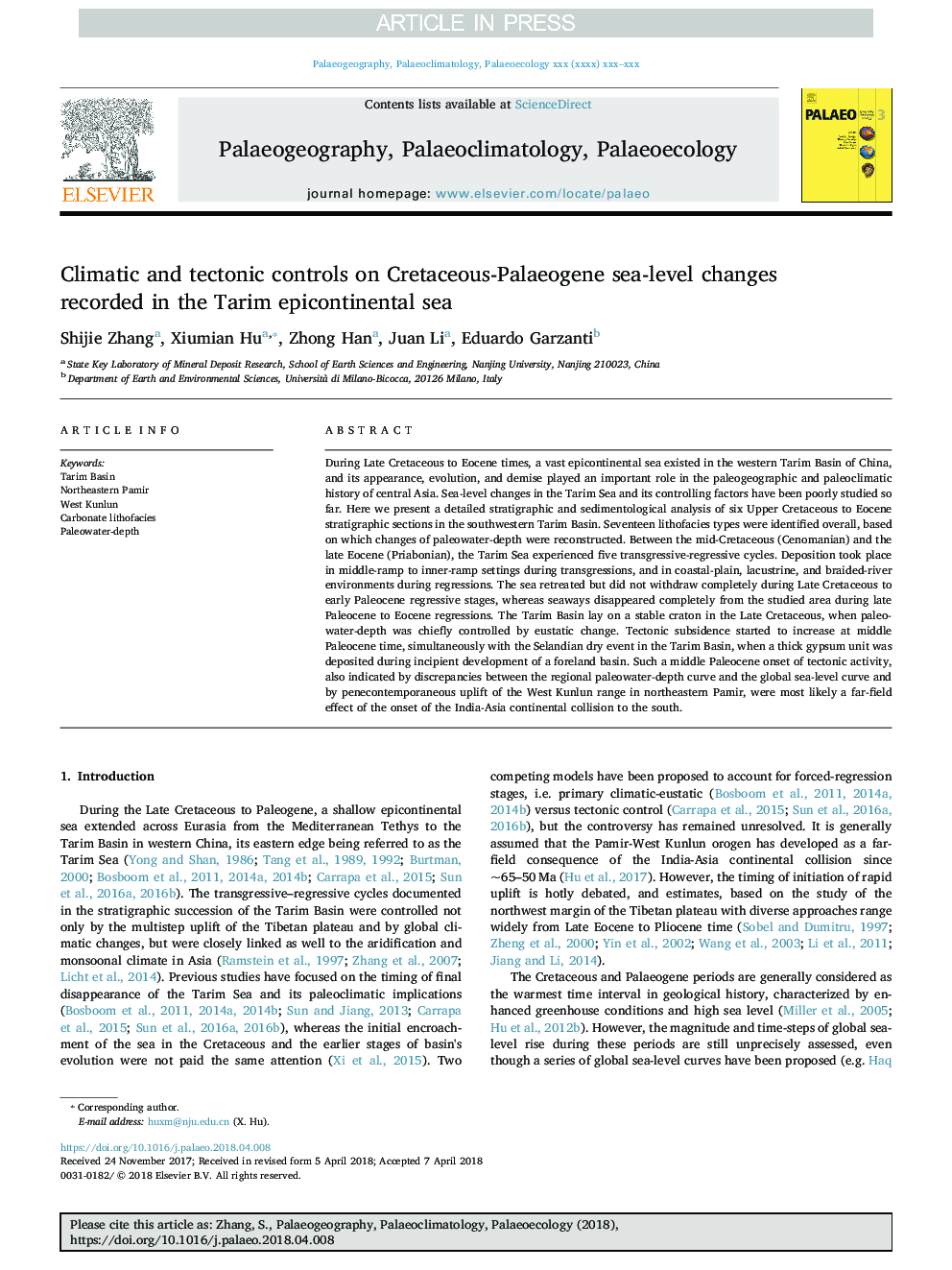| کد مقاله | کد نشریه | سال انتشار | مقاله انگلیسی | نسخه تمام متن |
|---|---|---|---|---|
| 8868208 | 1622091 | 2018 | 19 صفحه PDF | دانلود رایگان |
عنوان انگلیسی مقاله ISI
Climatic and tectonic controls on Cretaceous-Palaeogene sea-level changes recorded in the Tarim epicontinental sea
ترجمه فارسی عنوان
کنترل های اقلیمی و تکتونیکی در تغییرات سطح دریا در کرتاسه-پالئوزوئین ثبت شده در دریای اپیکینتننتای تاریم
دانلود مقاله + سفارش ترجمه
دانلود مقاله ISI انگلیسی
رایگان برای ایرانیان
کلمات کلیدی
موضوعات مرتبط
مهندسی و علوم پایه
علوم زمین و سیارات
فرآیندهای سطح زمین
چکیده انگلیسی
During Late Cretaceous to Eocene times, a vast epicontinental sea existed in the western Tarim Basin of China, and its appearance, evolution, and demise played an important role in the paleogeographic and paleoclimatic history of central Asia. Sea-level changes in the Tarim Sea and its controlling factors have been poorly studied so far. Here we present a detailed stratigraphic and sedimentological analysis of six Upper Cretaceous to Eocene stratigraphic sections in the southwestern Tarim Basin. Seventeen lithofacies types were identified overall, based on which changes of paleowater-depth were reconstructed. Between the mid-Cretaceous (Cenomanian) and the late Eocene (Priabonian), the Tarim Sea experienced five transgressive-regressive cycles. Deposition took place in middle-ramp to inner-ramp settings during transgressions, and in coastal-plain, lacustrine, and braided-river environments during regressions. The sea retreated but did not withdraw completely during Late Cretaceous to early Paleocene regressive stages, whereas seaways disappeared completely from the studied area during late Paleocene to Eocene regressions. The Tarim Basin lay on a stable craton in the Late Cretaceous, when paleowater-depth was chiefly controlled by eustatic change. Tectonic subsidence started to increase at middle Paleocene time, simultaneously with the Selandian dry event in the Tarim Basin, when a thick gypsum unit was deposited during incipient development of a foreland basin. Such a middle Paleocene onset of tectonic activity, also indicated by discrepancies between the regional paleowater-depth curve and the global sea-level curve and by penecontemporaneous uplift of the West Kunlun range in northeastern Pamir, were most likely a far-field effect of the onset of the India-Asia continental collision to the south.
ناشر
Database: Elsevier - ScienceDirect (ساینس دایرکت)
Journal: Palaeogeography, Palaeoclimatology, Palaeoecology - Volume 501, 15 July 2018, Pages 92-110
Journal: Palaeogeography, Palaeoclimatology, Palaeoecology - Volume 501, 15 July 2018, Pages 92-110
نویسندگان
Shijie Zhang, Xiumian Hu, Zhong Han, Juan Li, Eduardo Garzanti,
